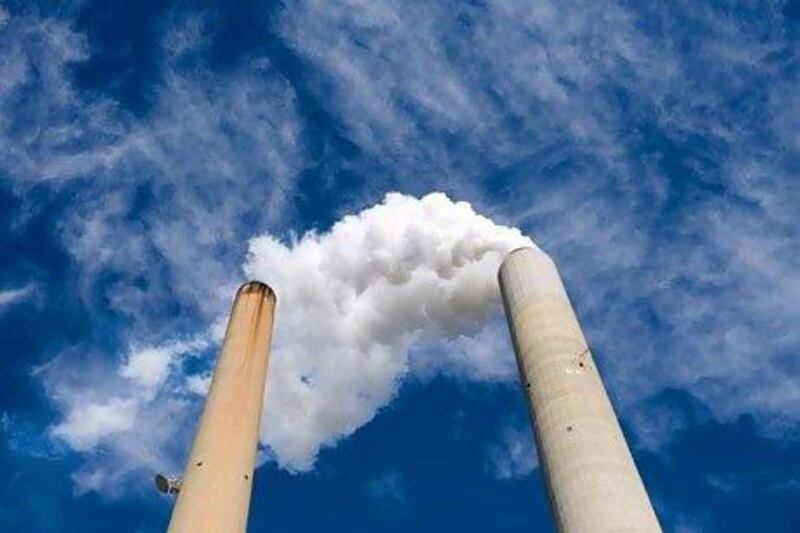Dubai has become known worldwide for its ambitious projects - the tallest, largest, longest, most expensive or prestigious. Its latest venture matches all those superlatives - but is being adopted more from necessity than pride.
At its latest meeting early this month, Dubai's Supreme Council of Energy confirmed it is pressing ahead with a "clean coal" power plant. This behemoth will not only be the first coal power station in the Gulf, but also potentially by far the world's largest carbon capture scheme, three times bigger than any other currently planned.
Dubai's plant will be an innovative type which converts the coal to a gas before burning it, improving efficiency and reducing pollutants - poisonous mercury and gases responsible for acid rain - dramatically. Only a few of these are operating around the world.
This plant alone would more or less double Dubai's emissions of carbon dioxide, the main gas responsible for global warming. Dubai residents' carbon footprint is already one of the world's biggest.
To prevent this, the power station would have to be fitted with carbon capture - a system to trap the carbon dioxide so that it can be permanently disposed of several kilometres underground, in carefully chosen locations. Several schemes are moving forward in the United States, Canada and China, but there is so far no commercial-scale power plant with carbon capture.
Masdar, Abu Dhabi's clean energy vehicle, announced in January that it would move ahead with carbon capture at the Emirates Steel plant in Mussaffah. Almost 1 million tonnes of carbon dioxide per year will be used to increase recovery at the emirate's oil fields.
But that is tiny compared with Dubai's coal power station, which could produce some 30 million tonnes of carbon dioxide annually. Some of that could be used to revitalise Dubai's declining oil production. The rest will have to go to Abu Dhabi's fields or other safe disposal sites, as indicated by Nejib Zaafrani the chief executive of the Dubai Supreme Council of Energy. "We also aspire to play an active role at the federal level in the UAE's efforts to develop and implement carbon capture and storage activities," Mr Zaafrani said in February.
The project clearly fits in Dubai's tradition of groundbreaking endeavours. It is being pursued for solid economic reasons, not only prestige.
With Dubai's electricity demand continuing to grow, the emirate cannot continue to rely solely on increasing imports of expensive liquefied natural gas (LNG) for fuel. Enhanced energy efficiency will help, but clean coal, solar and nuclear power, presumably in cooperation with the Emirates Nuclear Energy Corporation (Enec), are needed to diversify supply.
In contrast to its bounty of oil and gas, the Middle East has minimal coal deposits. But the fuel is globally abundant and countries such as the US, Indonesia, Australia and now Mozambique export large quantities.
Coal power with carbon capture is on my calculations somewhat more expensive than nuclear power, but cheaper than solar or LNG. Relying solely on Enec's nuclear plants would be risky in the case of delays to the programme or a prolonged safety shutdown.
If Dubai is to secure attractive terms for new gas supply from neighbours such as Abu Dhabi, Qatar or perhaps Iran, or for nuclear-generated electricity with Enec, it needs a convincing alternative. Thus even if the coal plant is never built, its virtual existence is a key part of negotiations.
Building such a plant, operating it, ensuring coal supplies and potentially running the carbon capture system will be a formidable challenge. It will not be as aesthetically pleasing as the Palm Jumeirah or Burj Khalifa or as familiar to residents as the Metro. But it is as necessary to the city and, perhaps, even more ambitious.





